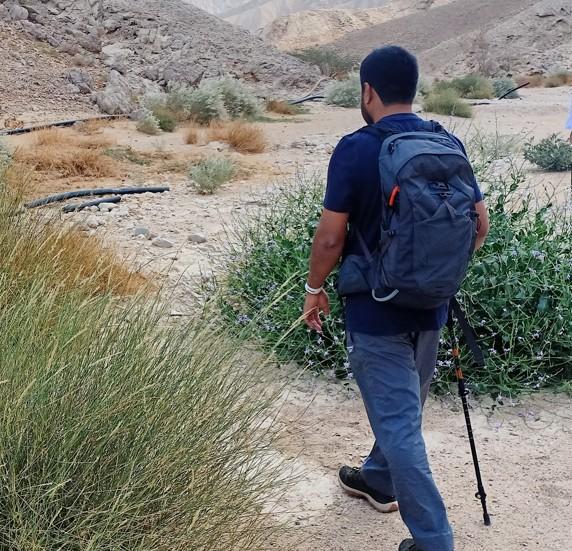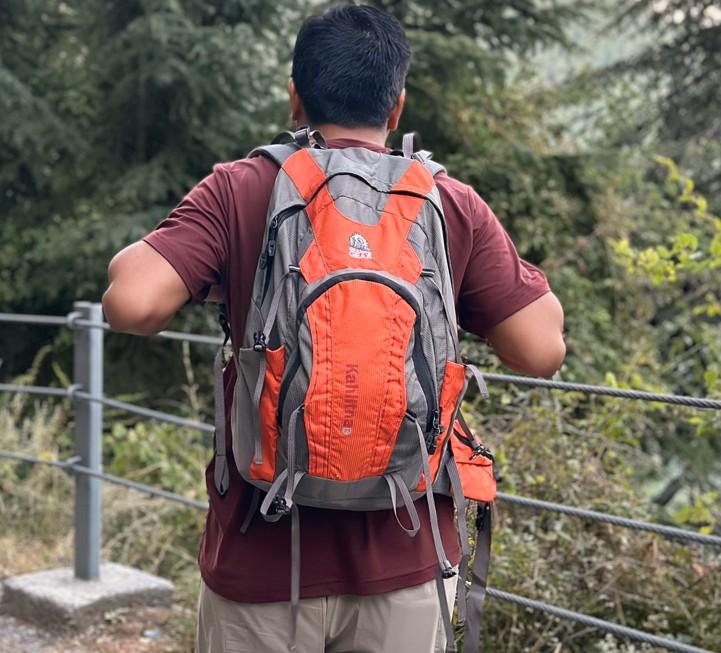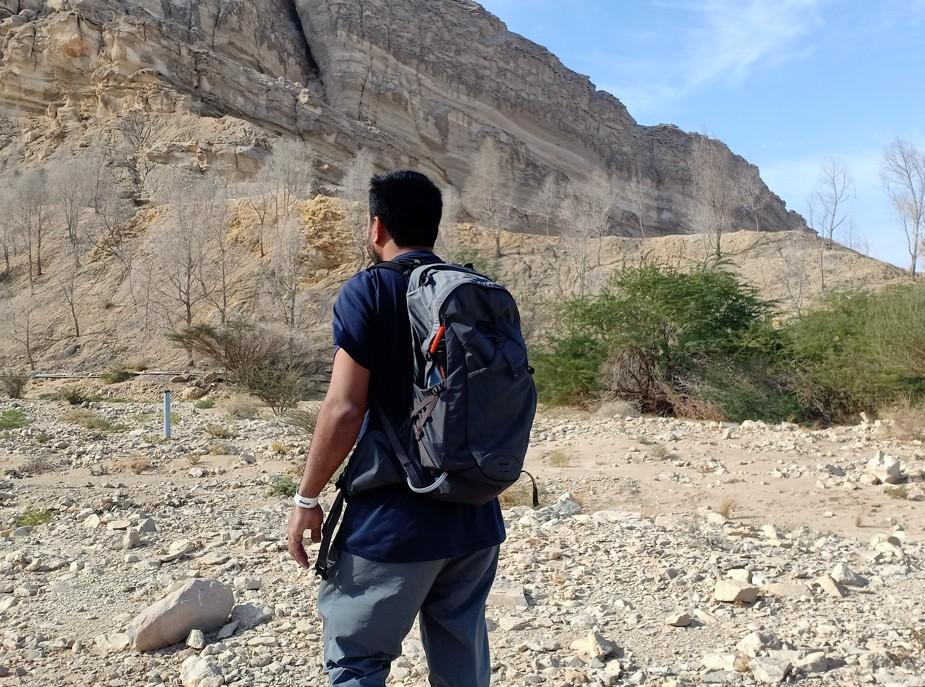Daypack size matters. You might wonder, ‘Why should I even bother about daypack size?’ It’s for your comfort on the trail. You pack what’s necessary for the particular trail and the duration of your hike. That results in boosting your hiking performance. That’s why you’ll want a daypack with the right size for your needs. Daypacks are available in sizes ranging from 10L to 40L.
Related: Best Osprey Daypack
In this article, I will explain the different daypack size ranges and what works best for a particular hike.
Sizes of Daypacks
10 Liters or Less
A daypack with a storage capacity of 10 liters or less is the perfect option for carrying essentials on short hiking trips or outdoor adventures. Think about what you need for two to three hours of hiking: enough water (depending on the weather conditions), snacks (if you like—though I don’t pack snacks for a two- to four-hour hike), and a light jacket if it’s cold. Opt for a 10L pack if you just want to carry the basic gear and typically go on 2- to 4-hour hikes.
Here’s a list of the necessary gear you can pack in a 10L daypack:
- Water (1L water bottle or hydration bladder)
- Snacks (trail mix, bars, or whatever you prefer)
- Jacket (if it’s cold)
- Sunglasses or Hat
- Personal Items (wallet or ID)
11-20 Liters
An 11-20 liter daypack is an ideal choice for moderate day hikes. It provides extra space compared to a 10L pack, allowing you to carry additional items. This daypack features a firm yet spacious design, making it perfect for moderate day hikes, urban day trips, or exploration. It also has well-organized sections and a comfortable design that keeps your gear safe and secure.
Here’s a list of the gear you can pack in an 11-20L daypack:
- Water (1.5L to 2L water bottle)
- Snacks (Energy bars, trail mix, or other light food items)
- Clothing (Lightweight jacket, extra t-shirt or base layer)
- Sunglasses, Hat, or Cap
- Personal Items (Including camera or power bank)
- Additional compact items (e.g., rain cover, flashlight, etc.)
20-30 Liters
20-30 Liters daypack is the best size pack for most of the day hiking’s. Its popular choice among regular hikers due to a larger, more versatile option for longer hikes like 6 to 12 hours.

Besides basic gear, you can pack extra stuff like a knee brace, cameras, extra batteries, spare slippers, a mug, and food. That’s why I prefer carrying 20-30L daypacks for most of my day hikes. My personal favorites are the Osprey Talon 22 and Granite Gear Kahiltna 29-Day Pack. I take either of them, depending on my needs. In short, go for a 20 to 30 liters pack if you want to pack:
- More food and water
- Extra clothes (For layering, such as a jacket, extra socks, or gloves, in case the weather changes)
- Special gear (like a camera, flashlight, batteries, etc.)
- Cooking Gear (lightweight stove, canister, and mug)
- Short Backpacking Trips ( For a very lightweight overnight trip with minimal gear).
Additionally, you get plenty of pockets and hooks for additional stuff and hanging gear outside the pack.
30- 40 Liters
If you plan an overnight hike, then a 30-40 liter daypack provides extra space for all the required hiking stuff. It’s also a good option for weekend hikers. I don’t carry more than a 25L daypack for full-day hiking as it’s not required. I never really felt the need to take the bigger daypack unless I went for a couple of days’ hike if I didn’t have to carry a sleeping bag and tent. I took a more than 30L daypack during a couple of night hikes, as it is a spacious yet compact overnight or weekend trip-sized pack. But for longer hikes, I take my backpacking backpack to carry plenty of food, tents, sleeping bags, and other gear.
The versatile design of this daypack makes it a perfect choice for long, demanding day hikes and multi-sport activities. It allows you to carry heavy weight. This daypack has adjustable straps, spinal support, and several pockets. These features provide balanced weight distribution and quick access to gear. So, this bag offers you comfort and support while carrying heavy weight during the trip.
Factors to Consider
Duration of the Hike
If you need a daypack for a 2–4 hour short day trip, then you should choose a 10-12 liter pack. These packs are lightweight and compact, which is perfect for carrying essentials like water, snacks, jackets, and personal items such as a mobile and keys.

For 6-12 hour-long day hikes, a 20-30L pack is a suitable option. It helps to carry extra food, water, and safety gear like a rain shell or a space blanket. Choose a bag with more than 30L storage capacity to adjust the extra gears for your extended trip because it may involve technical challenges.
Weather Conditions
While choosing a daypack, you must consider weather conditions because they affect your gear requirement. For rainy weather, you must consider gear that keeps you dry and comfortable during your trip. These gears include a raincoat, a waterproof bag cover, and quick-dry clothes.
Cold, wet, or harsh weather demands extra layers, hats, gloves, and waterproof gear. In this weather, you need a larger pack. So, you must carry extra food and drinks to maintain energy and hydration in harsh conditions.
In light and sunny weather conditions, only minimal gear is needed, which includes light clothes and sunscreen. So, you need a smaller pack. Therefore, always consider weather conditions to ensure your safety and comfort on the trail.
Personal Preferences
While packing a hiking daypack, personal preference plays a key role in deciding what you should include. Minimalist hikers prefer lightweight packing, which includes essentials like water, food, and basic navigation gear. They believe in minimalism and efficiency with lightweight, which makes it easy to travel.
Whereas some hikers like to carry extra stuff, it includes extra food, clothes, a camera, and a book. Eventually, they end up having heavier packs, but it helps maximize fun and comfort. So, striking a correct balance between need and comfort provides a pleasant journey according to your preferences and needs.
Conclusion: Best Size for Daypack
In short, a 20-30L daypack size is ideal for most of the day hiking. Having a bit of extra space, which 20-30L daypacks provide, can be highly beneficial even if the weather changes and you have to pack extra clothing. I don’t take less than a 15L daypack regardless of hiking duration. Personal preference, trip duration, and weather conditions significantly affect the daypack size selection. More than 30L daypacks are on the bigger side of day hiking unless you take some special gear for video or photography, or you plan to go for picnics often. Minimalists choose light bags, and those who prefer comfort may need more space. Maintain a balance between comfort and the need for a comfortable and enjoyable hike.
FAQ’s
How big should a hiking daypack be?
The size should be according to the length and duration of your hike. Use a 10-12L pack for short trips to carry essentials. Pick a 20-30L pack for longer hikes or variable terrains. If you are going for an overnight and multi-day trek, use a 30-L pack to carry more items like a camera book or emergency supplies.
Is a 30L backpack enough for hiking?
Yes, for most day hikes, a 30L backpack is sufficient. All your necessities, including water, food, additional clothing layers, a map, and a raincoat, are conveniently portable. Keep more supplies with you, such as a camera, an emergency kit, and other safety equipment that you might need on difficult hikes.
Is a 40L backpack too big for a day hike?
A 40L backpack is too big for a day hike. Most hikes consider a 20-30L backpack for a normal day hike. But it also depends upon the weather conditions and your activities. If you are hiking in harsh weather and carrying extra items for photography or group activities, then a 40L bag can be a practical choice.
How do I know if my daypack is too large?
A daypack is too large if the shoulder strap hangs much higher than your shoulder, even when tightened. This leaves a gap and allows you to fill it with useless items. It feels bulky and makes you feel uncomfortable during hiking. A proper daypack has only essential items and provides you comfort during hiking.
Related: Daypack vs Backpack
